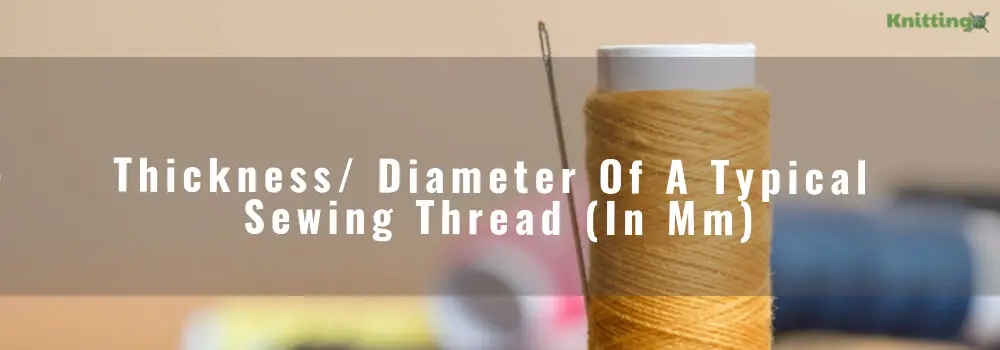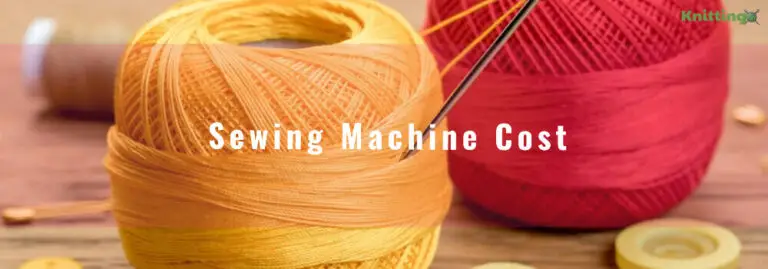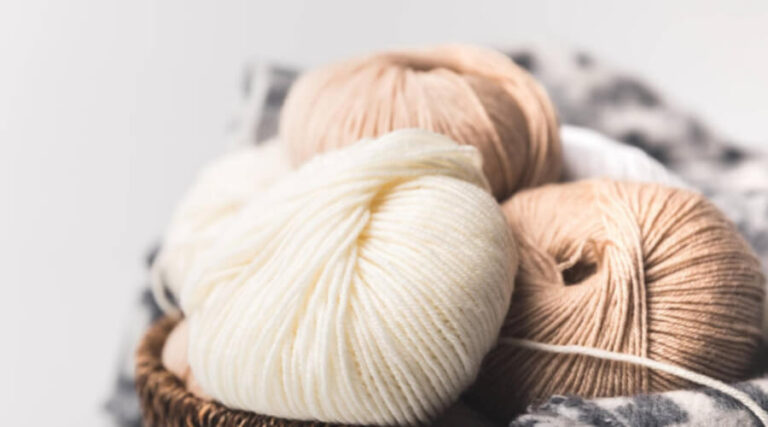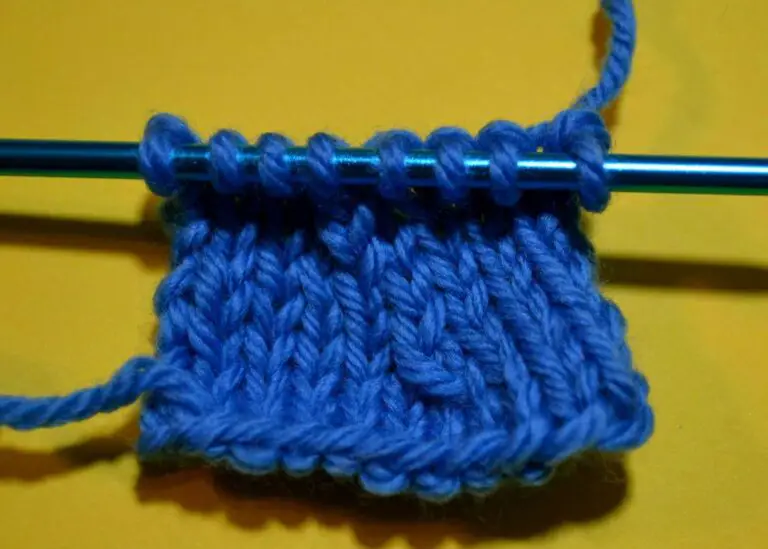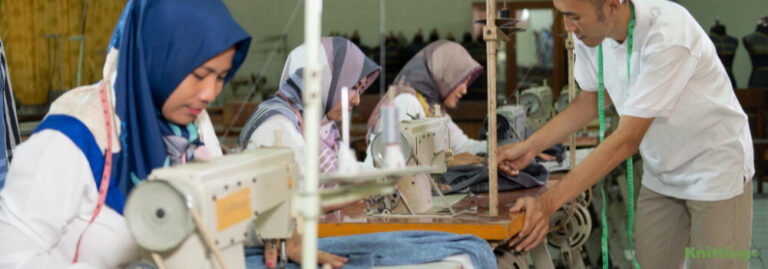We know many people still wonder what the letter in various threads stands for and why they are sized differently? Well, they tell us about the thickness of a thread. Getting the right thickness affects the diameter, visibility, strength, and sewing machine used. Sewing threads are unique types of yarn specifically designed for use with sewing machines. The major role of sewing thread is to deliver performance in stitches and seams. So it’s crucial to choose the correct one regarding your project type and your sewing model.
A small error when selecting the perfect sewing thread can cause a loss of investment in equipment, material, and labor. That’s why you need to understand different types of threads. Generally, the correct thread size plays a major role in determining the sewing quality and stitch quality in your fabric. However, the standards of classifying the size of the threads are sometimes confusing.
It would have been better if the all sewing and quilting industry picked a single standard that applies across the board. But, for now, that is not the case. In the US, the common classification is the weight standard. Here we will discuss different classifications used to measure and various thickness/diameter of typical sewing threads for informed decision making.
What Is The Thickness/Diameter Of A Typical Sewing Thread (In mm)?
A typical sewing thread of size 33(T30) [Tkt 80], government size AA with13,800 will have a diameter of .0050″ (.127mm). Its strength break is 1.8lbs with a minimum needle US of 12/80.
Common Units Used For Thread Size Classification
There are various units used to classify thread size, with the popular four being weight (wt), Denier (den), Tex, and commercial sizes (v).
Weight (wt)
The weight of the thread is generally the length (in kilometers) of a thread that weighs 1 kilogram. It indicates how plenty kilometers of thread are required to make 1kg. When thread weight is 40, it takes 40km to make up 1kg of the thread—the lower the number, the heavier the thread and vice versa.
The weight of thick and heavy thread is a lower number, like 8 or10. In contrast, the thinner and light thread has higher numbers like numbers 50 and 60. Interestingly, North America uses the thread weight number derived from km/kg while all the dimensions in the US are still in stitches/yards/feet!
The heavier the thread, the shorter the length needed to make 1kg. Meaning the stronger the thread, the thicker and lower the number. Although that’s not always the case, as explained below;
Normally, the sewing thread diameter depends majorly on its density and the material. We have seen cases where the thread is marked with weight 50, is thinner compared to the one marked with weight 40. You can also find a thread that’s stronger with weight 50 than another thread indicating weight 40. Density enables the thread thickness though it depends on the material and its construction method. Sometimes a lower weight number doesn’t necessarily mean a stronger or thicker thread.
Denier Count (Den)
The Denier unit also measures the thread at a fixed length. The measurement is the weight (in grams) of 9,000 meters of thread (9km). For example, if 9,000 meters weighs 70 grams, then it’s a 70-denier thread. Please note, large denier numbers are the heavier threads.
For nylon materials, you may not recognize the term from their description classified using Denier of the threads, which are woven. Many people usually ask if the denier thread size is still used for all sewing. Yes, they are still being used, although not for regular sewing thread, but majorly for embroidery ones.
Tex (T)
Tex is known to be the most consistent measuring method. It uses a fixed length typically to measure the weight of a thread. Tex number is the weight in grams of 1,000m (1k) of thread or 1000 meters of the thread that weighs 1gm= 1Tex. The higher Tex, the thicker your thread will be.
The international organization Standardization (IOS) has now adopted Tex to measure the unit for thread density. In due time the unit is probably going to be more popular. Even though the foot, mile, inch, and others were replaced in 1875 by meter, it’s still used 150 years later. So, we will not put more trust that Tex will become accepted this soon. However, it’s used in Canada, Europe, and even in the USA. Tex is categorized as follows;
1. Fine Tex threads- Tex 9 to Tex 19 (thin. Embroidery, unique)
2. Medium Tex threads- Tex 20 to Tex 69 (standard)
3. Heavy Tex threads- Tex 70 and higher (heavy-duty thread, upholstery)
Commercial Sizes (v)
Commercial sizes are normally used for heavy-duty threads for sewing heavy, webbing, or canvas. They are set sizes of 30,46,69,92,138,207,277,346,415 and 554. They are thread deniers divided by two. Commercial sizes are common for marine’s grade thread.
What Is The Diameter Of The Sewing Thread?
Let’s check on the following chart to determine various diameters of sewing threads around;
Needle and thread chart of bonded nylon or polyester for sewing machines
| Thread size: V (T) [ticket] | Minimum needle U.S./matric | Government size | Yds./pounds | Diameter | Break strength |
| 33 (T30)[Tkt 80] | 12/80 | AA | 13,800 | .0050”(.127mm) | 1.8 lbs. |
| 46 (T45)[Tkt 60] | 14/90 | B | 9,600 | .0094”(.238mm) | 7.5 lbs |
| 69 (T70)[Tkt 40] | 16/100 or 18/110 | E | 6000 | .0115”(.292mm) | 11 lbs |
| 92 (T90)[Tkt 30] | 19/ 120 | F | 4200 | .0133”(.337mm) | 14.5 lbs |
| 138 (T135)[Tkt 20] | 22/ 140 or 23/160 | FF | 3000 | .0163”(.414mm) | 22 lbs |
| 207 (T210)[Tkt 15] | 24/180 | 3 Cord | 2,000 | .0200”(.508mm) | 32 lbs |
| 277 (T270)[Tkt 10] | 25/200 | 4 cord | 1,500 | .0231”(.586mm) | 45 lbs |
| 346 (T350)[Tkt 8] | 26/220 | 5 cord | 1,200 | .0258”(.655mm) | 53 lbs |
| 415 (T400)[Tkt 7] | 27/250 | 6 cord | 1,050 | .0283”(.718mm) | 72 lbs |
| 554 (T600)[Tkt 5] | 30/330 | 8 cord | 655 | .0326”(.828mm) | 83 lbs |
Please note;
1. The V size is a popular US measurement for multi-ply, twisted bonded nylon or polyester threads. (larger number shows heaver threads)
2. “T” sizes represent the “TEX” measurement system; that’s why the numbers are equivalent to the weight in grams of 1000 meters of thread. (larger thread number shows heavier threads)
3. “Tkt” (Ticket) sizes equals metric “M” thread sizes used in various countries. (smaller numbers shows heavier threads)
What Size Is The All-Purpose Thread?
The most popular fabric threads store that is considered an all-purpose one is 50wt thread. There are poly/cotton or polyester such as Mettle, Gutermann all-purpose thread, 50/3 thread. These are more suitable for sewing projects since they hold your project jointly very well.
Please note that a 50wt all-purpose thread is majorly different from a high-quality 50wt Cotton thread for quilting. However, both threads sew perfectly well into quilts and garments. It’s advisable to pick a higher quality 50wt cotton for quilting purposes. Similarly, a higher quality 50wt thread offers a great thin thread that doesn’t add bulk to seams if piecing a quilt. They are also suitable for applique, machine quilting: hand applique and hand piecing. For a while now, sewers have been switching to high-quality 50wt thread for numerous sewing projects.
What Is The Thinnest Sewing Thread?
Invisafil 100WT Polyester by wonderful is among the thin thread in the market. Each of their mini-pack consists of six spools of 400m each. Perhaps it might be the thinnest thread. It’s one of the greatest choices for those who don’t want to show stitches other than monofilaments. It’s incredible for invisible hand and machine applique, quilting in the ditch, piping hot curves, and hand fishing techniques—the free-motion quilters like it, especially for showing the quilting contours without a thread looks. The poly thread will not melt if exposed to extreme steam or heat.
How Do I Choose The Right Thread?
Getting a professional finish is about sewing skills, the right fabric, the right needle, and the right thread. But, besides that, here is what should be considered while choosing the correct thread;
Silk Sewing Machine Thread
When you are sewing natural fibers like silk or wool, or basting, it is best to use silk thread. It’s very fine, great, and suitable for tailoring because it is strong withstands heat temperatures.
Cotton Sewing Machine Thread
It’s good for natural fiber fabric due to its ability to take lots of heat, which is great for pressing seams. Cotton threads have a smooth covering that makes them easier to dye for a smooth and lustrous finish. However, it’s prone to snap since it doesn’t have much give-in.
Polyester Sewing Machine Thread
Unlike cotton thread, polyester cannot take high temperatures and be damaged when pressing on high heat. It’s fine if you will be using synthetic fabrics because of the low heat setting while pressing your work. The good thing about the polyester thread is the capacity to give in. Its finish slips across easily than cotton ones.
All-Purpose Sewing Threads
Normally all-purpose thread is cotton wrapped in polyester; it’s an affordable option and perfect for many projects.
Elastic Sewing Machine Thread
It’s usually used in the bobbin with regular thread on top. It enables you to make an instant smocked or shirred finish.
Conclusion
Various threads come in different weights and thicknesses—the thicker or heavier your thread, the more visible the stitches. When sewing thicker fabrics, you should consider using thicker thread due to its strength. Know the intended use of the yarn, strains, and stress on the seams before picking the right thread. Always adjust the tension of your machine when you switch the thickness of your thread. As well, ensure the needle you pick has a bigger eye enough for your intended project thread not only to fit but give a little wiggle space.

